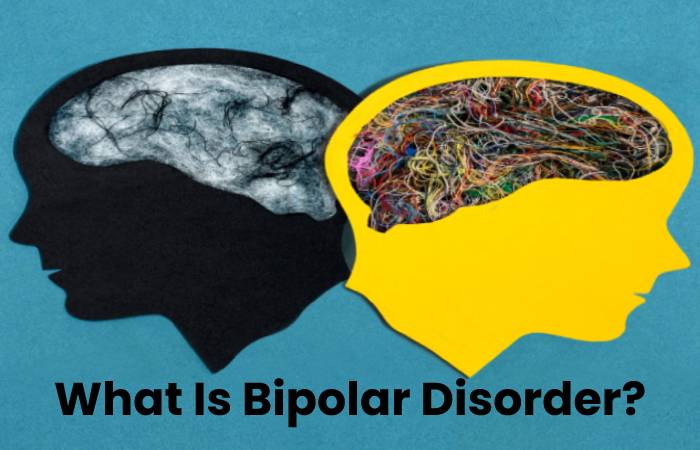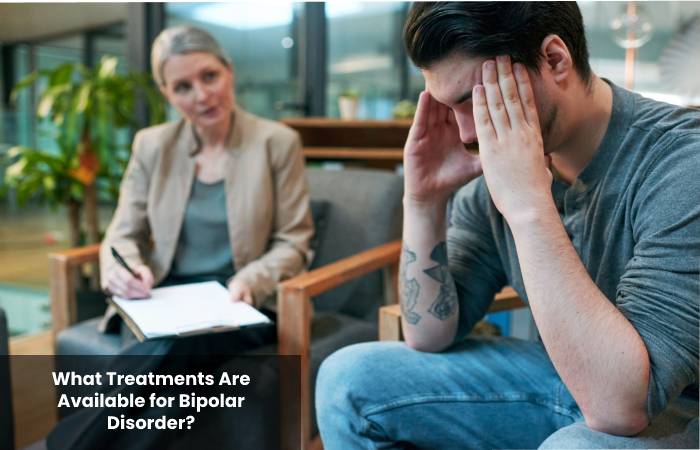A Positive Outlook of Bipolar Disorder – Positive Prospects for living with bipolar disorder People rarely look positively at their mental state. In the United States and other countries worldwide, mental illness carries a stigma.
Social and perceived stigma profoundly affects people diagnosed with mental states. In the United States, less than half of adults with mental disorders have sought medical services in the past year. It helps people treat their symptoms, prevent the long-term consequences of untreated mental illness, and build their strengths to stay healthy like bipolar disorders.
People with bipolar disorder experience swaying moods. They have tragic episodes of low mood and low energy and episodes of high mood or high energy mania or common Mania.
Table of Contents
What Is Bipolar Disorder?
People with bipolar disorder experience swaying moods. They have tragic episodes of low mood and low energy and episodes of high mood or high energy mania or common Mania. Mood episodes can last for hours, days, or even months.
Most people with bipolar disorder have predominantly depressive episodes, but some have mostly manic or hypomanic episodes. Not always above or below. Most people with bipolar disorder have a considerable period between mood episodes and experience euthymia. In other words, it is neither depressed nor manic.
There are five types of bipolar disease: bipolar I, bipolar II, cyclotomic disorders, unspecified bipolar disorders (NOS), and rapid circulation bipolar disorders. Bipolar I and II are the most common diagnoses.

Types of Bipolar Disorder
Bipolar I is considered more severe than Bipolar II because people with Bipolar I experience at least one episode of Mania. Bipolar II people experience low Mania, a mild attack of rising mood and energy. Though considered less severe and untreated, bipolar II disorders can impede a person’s ability to work, attend school, or fully participate in the community. People with bipolar I disorder are more likely to experience symptoms of psychosis than those with bipolar II disorder, and psychosis is more likely to occur in Mania than depression.
With rapid circulation bipolar disorder, an individual experiences four or more episodes of Mania, low Mania, or depression per year and may or may not return to everyday mood with cyclothymic disorder. Individuals experience despair and mild hints of hypotension episodes but never meet the diagnostic criteria for depression or hypotension episodes. Symptoms may be mildly categorized, but it is essential to look for effective treatments, as the ups and downs of cyclothymia can interfere with relationships, school and work responsibilities, and daily life.
The bipolar Mood States – A Positive Outlook of Bipolar Disorder
Some symptoms that characterize the mood of bipolar disorder:
Mania. The occurrence of these episodes uses to assist in diagnosing bipolar I. Manicure episodes last for at least a week and characterize by uplifting, widening, or irritating sway rather than the result of drugs or other substances. Three or more symptoms also describe mood swings:
- Difficulties in social or work environment
- Ability to feel rest after a short sleep, such as 3 hours
- Quick speech or thinking
- Inflated self-esteem or grand feelings
- Distraction by external stimulus
- Participation in high-risk activities such as impulsive travel, spending, and sexual activity
Hypomania. Hypotension episodes are less severe than manicure episodes and may not result in the same level of impulsive behavior or disruption in everyday life. Low blood pressure episodes may follow. A manic episode in a person with bipolar I disorders or characterized. As bipolar II disorder, circulatory disorder, NOS, or a diagnosed rapid circulatory bipolar disorder. Episodes of low blood pressure are shorter than episodes of manic disease and can last for at least four consecutive days.
Depression. Depressing episodes characterizes by depression, weakness, and lack of joy in everything. Five or more symptoms may indicate an episode of major depression.
- Feeling depressed
- Decreased interest and joy in activities
- Weight loss or loss of appetite
- Insomnia or oversleeping
- Lack of energy
- Feeling guilty or worthless
- I can’t think or focus on tasks
- Suicide thoughts and actions
These symptoms last for at least two weeks and complicate social work or other situations.
The Appearance of Symptoms and Diagnosis
Symptoms of bipolar disorder often appear in a person’s twenties, but children and adolescents may also show signs of bipolar disorder.
Missed diagnoses of bipolar disorder are not uncommon. Seven out of ten patients have been misdiagnosed at least once. However, with a correct diagnosis, treatments to control bipolar disorders are often successful. The perpetual myth that people with bipolar disorder are inherently less capable of handling career and family responsibilities is simply not true. With effective treatment, people with the bipolar disease can become happy and productive. In some cases, people with bipolar disorder may be uniquely qualified for a particular situation because of their perspectives and living experience.
What Treatments Are Available for Bipolar Disorder?
Treatment of bipolar disorders focuses on treatment and medication. For most people, the combination of the two approaches is more effective in achieving positive results in the long run.
Cognitive-behavioral therapy (CBT) is an evidence-based therapy that has been shown to be effective in treating bipolar disorders. CBT therapy focuses on understanding how your thoughts, actions, and moods are related. Patients who participate in CBT learn strategies to improve their mood by changing their thinking and behavior patterns.
CBT therapy helps people recognize ideas and behaviors that may indicate the development of depression or Mania. CBT allows clients to use the skills and strategies they have learned to prevent or mitigate mood episodes. Through CBT, people can also navigate mood episodes and identify personal strengths and assets to avoid recurrence or hospitalization.

Interpatient peer support groups are also influential in the treatment of bipolar disorders. Studies show that when people join these groups, they are 86% more likely to continue treatment and less likely to be hospitalized in the future.
Living and Thriving with a Bipolar Diagnosis – A Positive Outlook of Bipolar Disorder
Accepting and adopting a bipolar diagnosis can be difficult due to the mental state’s stigma. Advocacy for people like Moezzi, for example, has helped change people’s perspectives and shows them how to look positively at bipolar disorders. Bipolar disorders do not hinder or proficient them. It makes them extraordinarily capable.
Skyland Trail is the best mental health treatment in the United States because it is passionate about showing clients like Melody how to treat and manage their condition and how to do it alive in life. It is one of the centers. Complete and achieve its purpose.
Our integrated, holistic approach includes specialized programs for adults with bipolar disorders. The dual diagnostic program is offered to adults with alcohol or substance use disorders co-existing with bipolar disorders. Contact us today so you can learn more about our therapy program and holistic approach.
